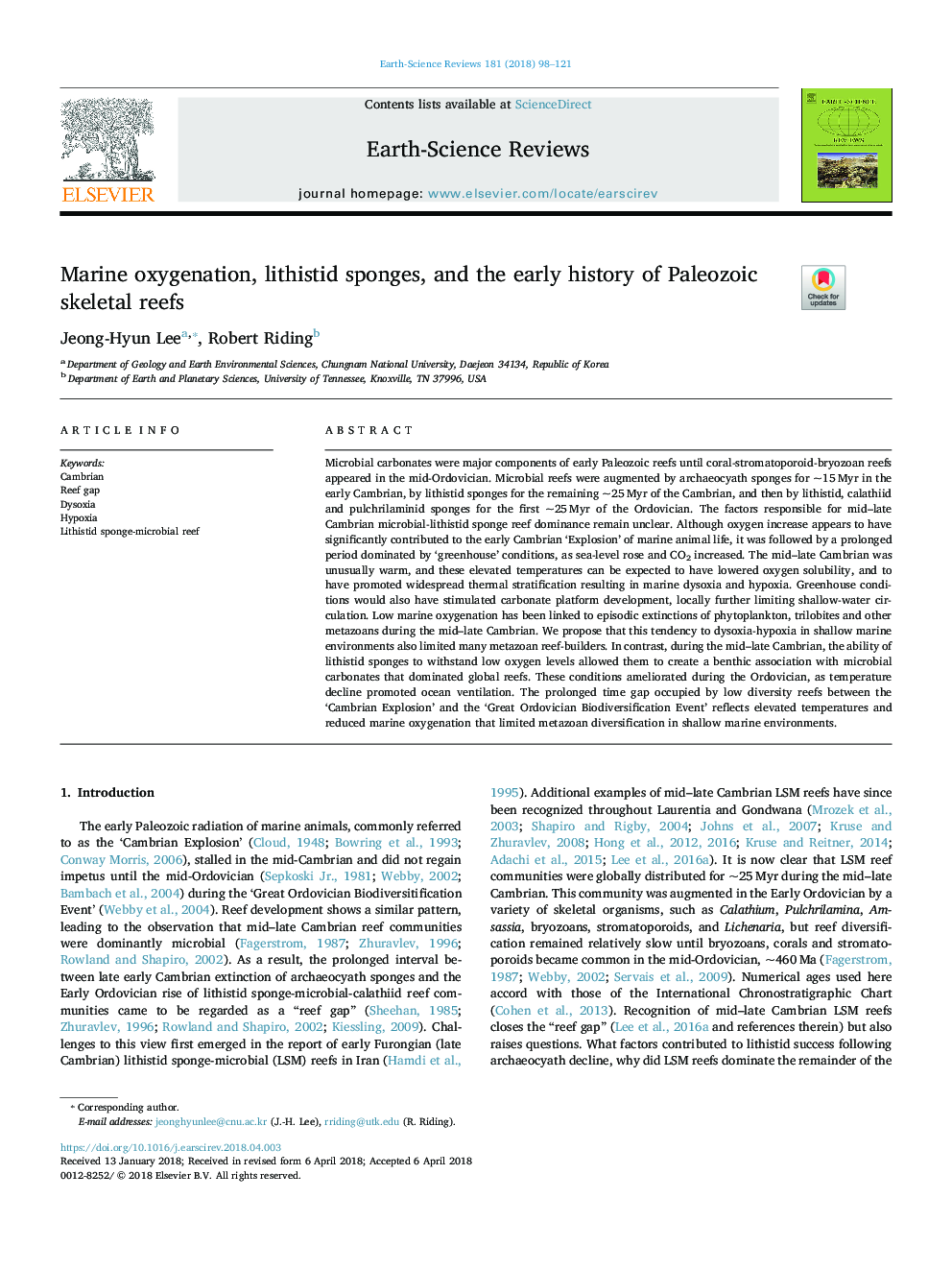| Article ID | Journal | Published Year | Pages | File Type |
|---|---|---|---|---|
| 8912942 | Earth-Science Reviews | 2018 | 24 Pages |
Abstract
Microbial carbonates were major components of early Paleozoic reefs until coral-stromatoporoid-bryozoan reefs appeared in the mid-Ordovician. Microbial reefs were augmented by archaeocyath sponges for ~15â¯Myr in the early Cambrian, by lithistid sponges for the remaining ~25â¯Myr of the Cambrian, and then by lithistid, calathiid and pulchrilaminid sponges for the first ~25â¯Myr of the Ordovician. The factors responsible for mid-late Cambrian microbial-lithistid sponge reef dominance remain unclear. Although oxygen increase appears to have significantly contributed to the early Cambrian 'Explosion' of marine animal life, it was followed by a prolonged period dominated by 'greenhouse' conditions, as sea-level rose and CO2 increased. The mid-late Cambrian was unusually warm, and these elevated temperatures can be expected to have lowered oxygen solubility, and to have promoted widespread thermal stratification resulting in marine dysoxia and hypoxia. Greenhouse conditions would also have stimulated carbonate platform development, locally further limiting shallow-water circulation. Low marine oxygenation has been linked to episodic extinctions of phytoplankton, trilobites and other metazoans during the mid-late Cambrian. We propose that this tendency to dysoxia-hypoxia in shallow marine environments also limited many metazoan reef-builders. In contrast, during the mid-late Cambrian, the ability of lithistid sponges to withstand low oxygen levels allowed them to create a benthic association with microbial carbonates that dominated global reefs. These conditions ameliorated during the Ordovician, as temperature decline promoted ocean ventilation. The prolonged time gap occupied by low diversity reefs between the 'Cambrian Explosion' and the 'Great Ordovician Biodiversification Event' reflects elevated temperatures and reduced marine oxygenation that limited metazoan diversification in shallow marine environments.
Related Topics
Physical Sciences and Engineering
Earth and Planetary Sciences
Geology
Authors
Jeong-Hyun Lee, Robert Riding,
